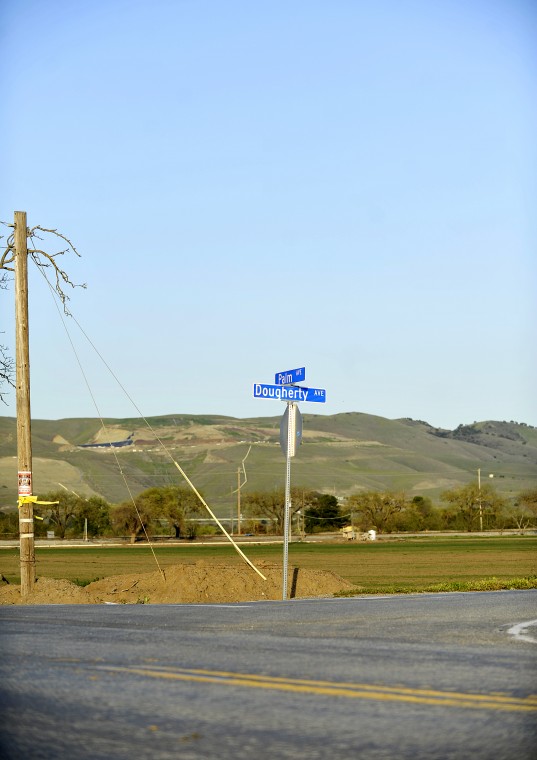
A child runs toward the iconic yellow and black school bus, backpack in tow, bus pass on a lanyard around his neck, smiling as a woman yells “Go, go, go!” He makes it just before the door closes.
It’s a typical morning for the bus stop at Church Street and Edmundson Avenue, one of Morgan Hill Unified School District’s 675 total bus stops.
Yet when Sierra LaMar, 15, went missing on her way to Sobrato High School, walking toward her bus stop on Palm and Dougherty Avenue in unincorporated Morgan Hill, it wasn’t a typical day. She never made it to the bus stop the morning of March 16 and now, questions arise from the community: are MHUSD buses safe?
The mindset of some parents and grandparents has changed since March 16. Sierra’s half-mile walk from her home on Paquita Espana Court to her bus stop is a common distance to assigned bus stops for the daily 2,000 students. Students grades kindergarten through 6th grade can walk up to three-quarters of a mile to a bus stop whereas grades 7 through 12 can walk one and a-half miles, according to board policy.
Sierra was one of two students assigned to that bus stop, although according to Deputy Superintendent Bonnie Tognazzini, the other student “was seldom there.”
Melissa Williams, mother of Sobrato junior Amanda Stanley, 17, had her daughter assigned to the Palm and Dougherty bus stop for two years until she got her license at the beginning of this school year. Williams complained multiple times to the district of the rural bus stop, which is quiet and usually empty, surrounded by a grass farm and open fields.
“If one parent complains it just seems like common sense that you don’t put young women in a rural area,” said Williams.
Williams’ own mother would take Stanley to the bus stop and wait until the bus arrived. Stanley was one of the few students who took the bus, said Williams, who lives less than half a mile from the stop.
“Had my daughter not gotten her license, my mother would have been watching (the day Sierra went missing). You could imagine how we feel,” said Williams.
When she and her mother contacted the district with multiple complaints in the last two years, they said the district’s response was that high school students could walk a mile to school.
“Basically, they said that we were asking for special treatment and they weren’t going to give it to us,” said Williams.
She said it was not the distance from her home that bothered her, but the remoteness of the bus stop itself.
“My mother felt really strongly that this bus stop was dangerous,” Williams said. “I know some districts are getting rid of the bus system. The buses are a God-send for working parents. I just want them to use common sense and listen to people.”
For grandparent Irene Porras, she keeps a watchful eye on the 10 or so children waiting at the Church and Edmundson stop every morning.
“They don’t ever walk alone,” said Porras of her two grandchildren. “You can’t be too cautious.”
After Sierra went missing, Porras warned her two grandchildren, a second grader and seventh grader who she walks to and from the bus stop every day, about possible abductions.
“Watch out for strangers, for vans or cars that go slowly in the neighborhood,” she told them.
Bus fare increases, regulations
School bus routes are re-evaluated yearly due to population changes from year to year, said Tognazzini.
“I think the bus stops are safe. But we can’t protect students from everything,” she said.
Spots are chosen as “centrally located” and far off from the roadways, she said. The district is not required to provide home to school transportation yet is required to provide transportation for special education.
Currently, the district has 63 buses, of which 17 are used for home to school, 17 to special education in the 300-square-mile area of transportation MHUSD covers. The other 29 older buses are used mainly for back-up situations to handle ambulatory or special seating requests.
With a potential $1.5 million in cuts to transportation, Tognazzini said at the last school board meeting that if the cut goes through after the California governor’s May budget proposal, the district may entertain the idea of more furlough days, or possible layoffs.
Tognazzini announced an increase to bus passes starting for the 2012-13 school year due to the high cost of fuel and to cover operational costs. She reminded the board that the amount parents pay for passes does not cover the cost of transportation, which runs a bill of $1.5 million total. Trigger cuts in December cut 50 percent of transportation funds to $750,000.
The increase would add $50 to the current annual cost of $310 for regular home to school roundtrip transportation and $25 to low-income home to a roundtrip bus pass for a total of $180.
“We’re actually considering extending those walking distances to save resources. We haven’t determined that those would save much money,” said Tognazzini. “We do like our students to have to walk as little as possible. We would only do that if it was fiscally responsible.”
Tognazzini said complaints made to the transportation department to move bus stops can be difficult because of the mandated walking distances. The district began charging for services about 20 years ago, with few increases during that time, she said.
“Every parent would like their student dropped off at their front door. Some who complain are concerned, and we share their concern. Considering the number of kids taking the bus every day, we’ve had very few incidents with the way we’re currently running the service,” said Tognazzini.







